Endurance: Shackleton's lost ship is found in Antarctic
- Published
WATCH: First pictures reveal lost Antarctic ship Endurance
Scientists have found and filmed one of the greatest ever undiscovered shipwrecks 107 years after it sank.
The Endurance, the lost vessel of Antarctic explorer Sir Ernest Shackleton, was found at the weekend at the bottom of the Weddell Sea.
The ship was crushed by sea-ice and sank in 1915, forcing Shackleton and his men to make an astonishing escape on foot and in small boats.
Video of the remains show Endurance to be in remarkable condition.
Even though it has been sitting in 3km (10,000ft) of water for over a century, it looks just like it did on the November day it went down.
Its timbers, although disrupted, are still very much together, and the name - Endurance - is clearly visible on the stern.
"Without any exaggeration this is the finest wooden shipwreck I have ever seen - by far," said marine archaeologist Mensun Bound, who is on the discovery expedition and has now fulfilled a dream ambition in his near 50-year career.
"It is upright, well proud of the seabed, intact, and in a brilliant state of preservation," he told BBC News.
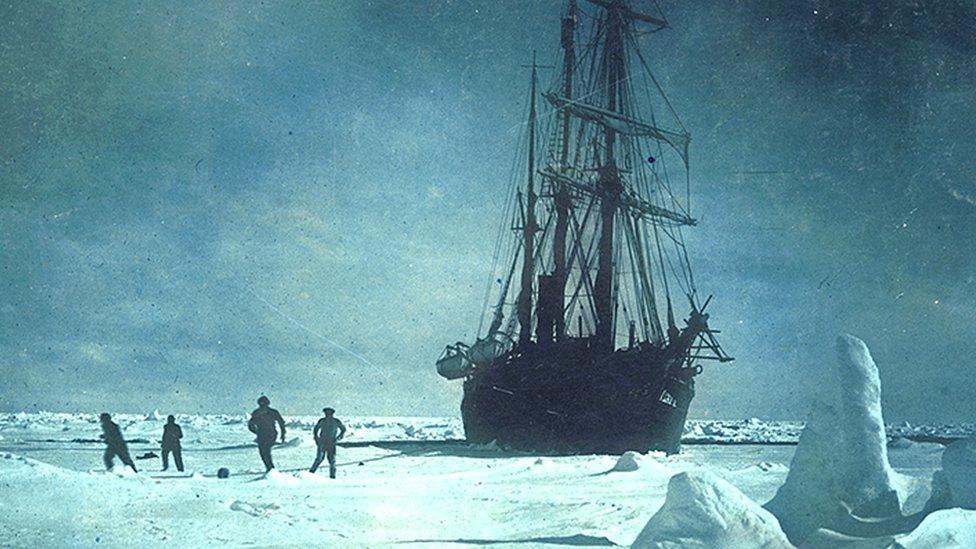
The Endurance was trapped in sea-ice for months before sinking to the deep in 1915
The project to find the lost ship, external was mounted by the Falklands Maritime Heritage Trust (FMHT), external, using a South African icebreaker, Agulhas II, and equipped with remotely operated submersibles.
The mission's leader, the veteran polar geographer Dr John Shears, described the moment cameras landed on the ship's name as "jaw-dropping".
"The discovery of the wreck is an incredible achievement," he added.
"We have successfully completed the world's most difficult shipwreck search, battling constantly shifting sea-ice, blizzards, and temperatures dropping down to -18C. We have achieved what many people said was impossible."
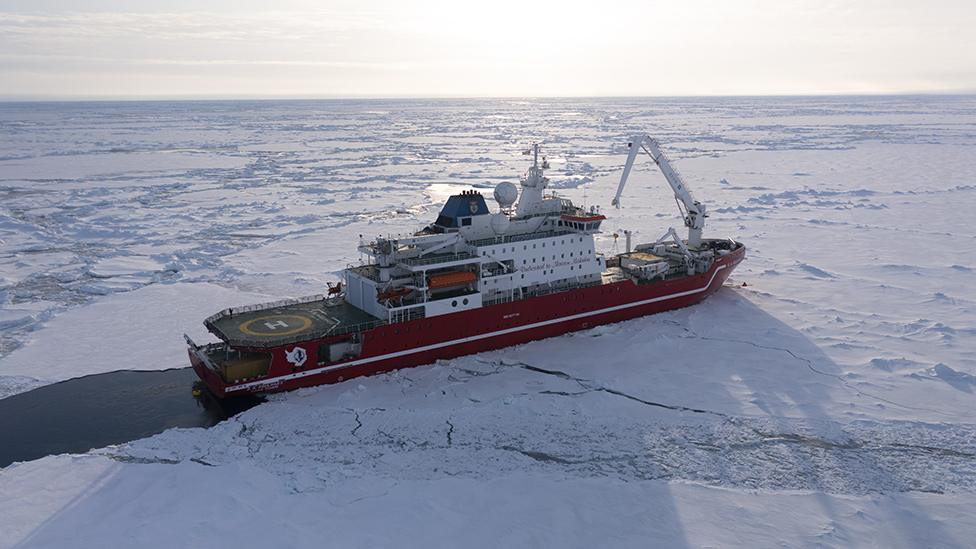
The Agulhas had favourable ice conditions in what was still a hostile environment
Where was the ship found?
Endurance was spotted in the Weddell Sea at a depth of 3,008m.
For over two weeks, the subs had combed a predefined search area, investigating various interesting targets, before finally uncovering the wreck site on Saturday - the 100th anniversary of Shackleton's funeral. The days since the discovery have been spent making a detailed photographic record of the timbers and surrounding debris field.
The wreck itself is a designated monument under the international Antarctic Treaty and must not be disturbed in any way. No physical artefacts have therefore been brought to the surface.

Mensun Bound: "She's sitting upright" on the seafloor
What could the subs see?
The ship looks much the same as when photographed for the last time by Shackleton's filmmaker, Frank Hurley, in 1915. The masts are down, the rigging is in a tangle, but the hull is broadly coherent. Some damage is evident at the bow, presumably where the descending ship hit the seabed. The anchors are present. The subs even spied some boots and crockery.
"You can even see the ship's name - E N D U R A N C E - arced across its stern directly below the taffrail (a hand rail near the stern). And beneath, as bold as brass, is Polaris, the five-pointed star, after which the ship was originally named," said Mensun Bound.
"I tell you, you would have to be made of stone not to feel a bit squishy at the sight of that star and the name above," he added.
"You can see a porthole that is Shackleton's cabin. At that moment, you really do feel the breath of the great man upon the back of your neck."
Read more of the marine archaeologist's account here.
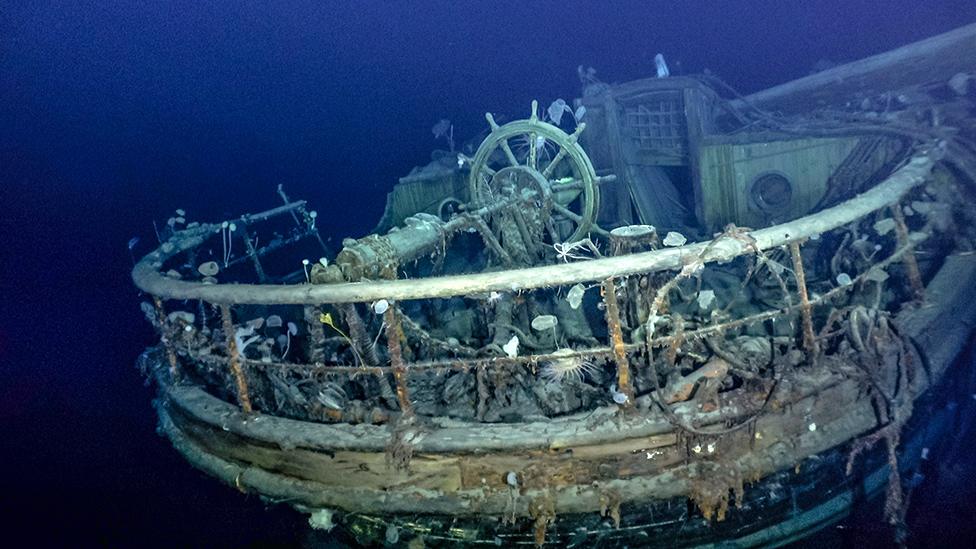
Filter feeders have colonised the wreck but there are no wood-eating worms
What life had attached to the ship?
Interestingly, the wreck has been colonised by an abundance of life - but not of the type that would consume it.
"It would appear that there is little wood deterioration, inferring that the wood-munching animals found in other areas of our ocean are, perhaps unsurprisingly, not in the forest-free Antarctic region," commented deep-sea polar biologist Dr Michelle Taylor from Essex University.
"The Endurance, looking like a ghost ship, is sprinkled with an impressive diversity of deep-sea marine life - stalked sea squirts, anemones, sponges of various forms, brittlestars, and crinoids (related to urchins and sea stars), all filter feeding nutrition from the cool deep waters of the Weddell Sea."
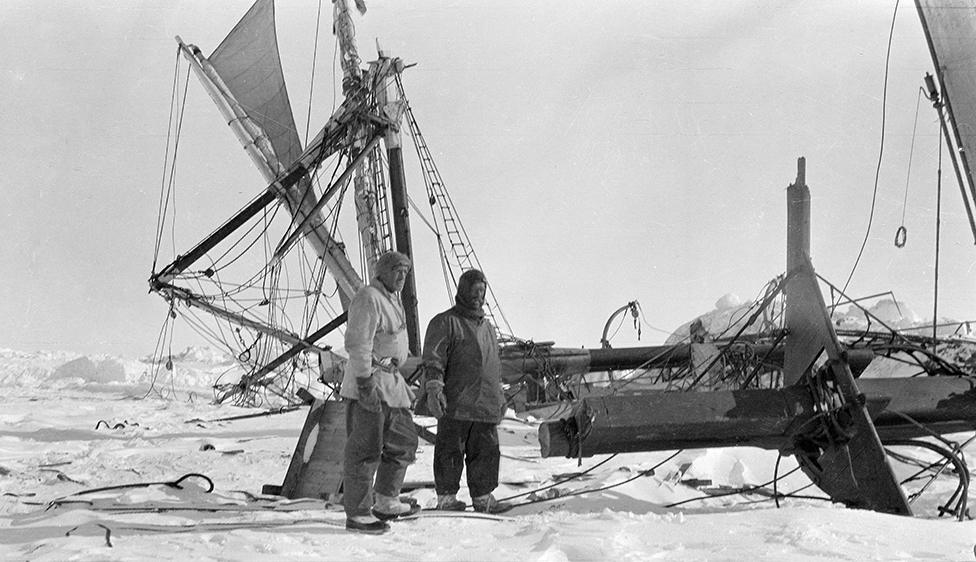
Shackleton (L) looks over the broken remains of his ship just before it went to the deep
Why was this ship so prized?
Two reasons. The first is the story of Shackleton's Imperial Trans-Antarctic Expedition. It set out to make the first land crossing of Antarctica, but had to abandon the quest when the expedition ship, the Endurance, was trapped and then holed by sea-ice. From then on it was all about survival. Shackleton somehow managed to get his men to safety, an escape that saw the Anglo-Irish explorer himself take a small lifeboat across ferocious seas to get help.
The other reason was the challenge itself of finding the ship. The Weddell Sea is pretty much permanently covered in thick sea-ice, the same sea-ice that ruptured the hull of Endurance. Getting near the presumed sinking location is hard enough, never mind being able to conduct a search. But herein also lies part of the success of the FMHT project. This past month has seen the lowest extent of Antarctic sea-ice ever recorded during the satellite era, which stretches back to the 1970s. The conditions were unexpectedly favourable.
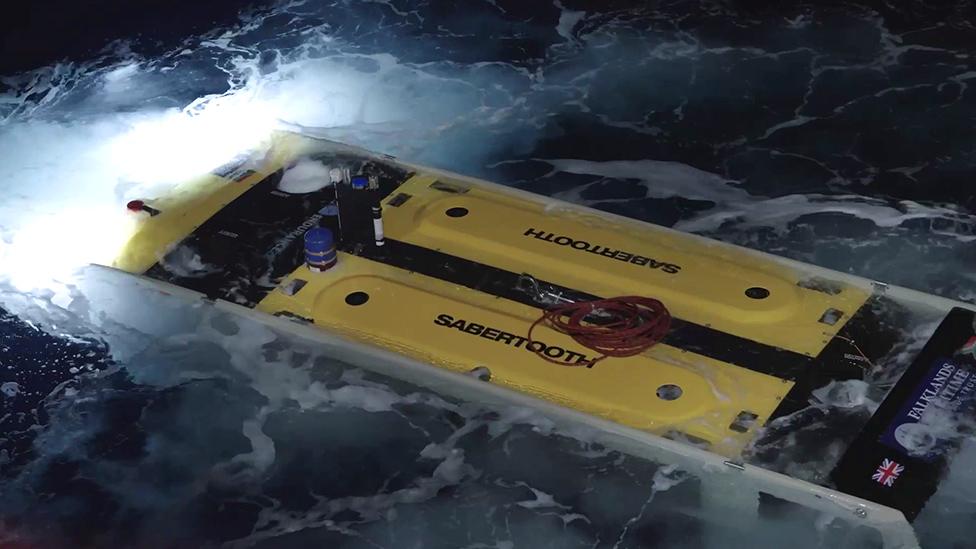
One of the submersibles returns to the surface after another dive to the Weddell Sea floor
Historian Dan Snow describes the excitement when the Endurance was found
The Agulhas wrapped up the survey of the wreck and departed the search site on Tuesday. The icebreaker is heading for its home port of Cape Town. But the intention is to call into the British Overseas Territory of South Georgia where Shackleton is buried.
"We will pay our respects to 'The Boss'," said Dr Shears, using the nickname the Endurance crew had for their leader.
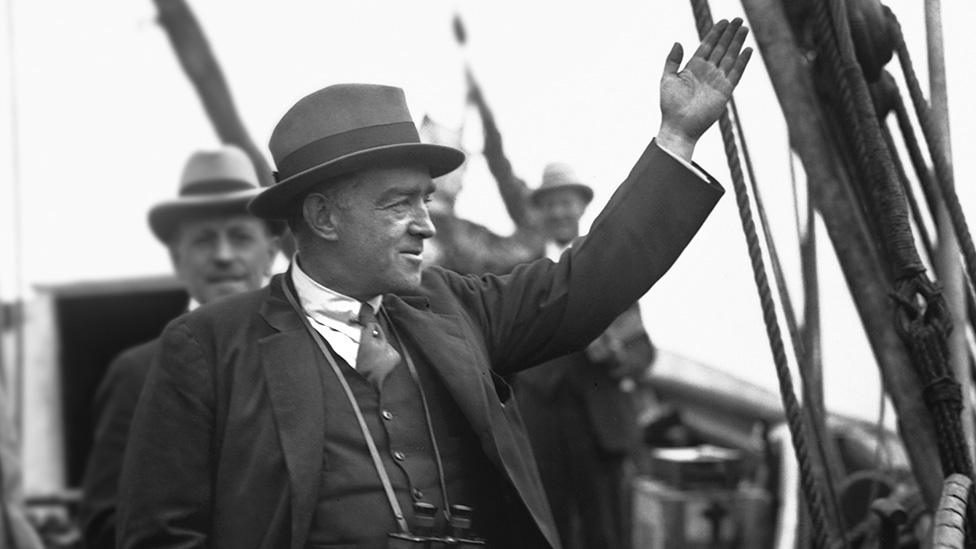
The Boss is buried at Grytviken Whaling Station on South Georgia

As the stern of Endurance looked in dry dock in 1914 before departure to Antarctica
All wreck imagery is courtesy of the Falklands Maritime Heritage Trust and National Geographic
Related topics
- Published9 March 2022
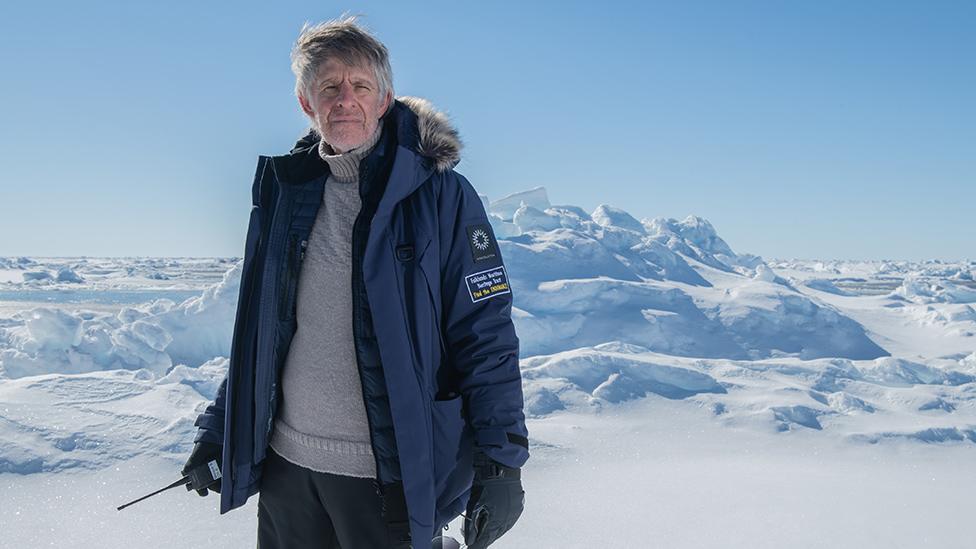
- Published26 February 2022

- Published13 February 2022
- Published4 February 2022

- Published20 January 2022
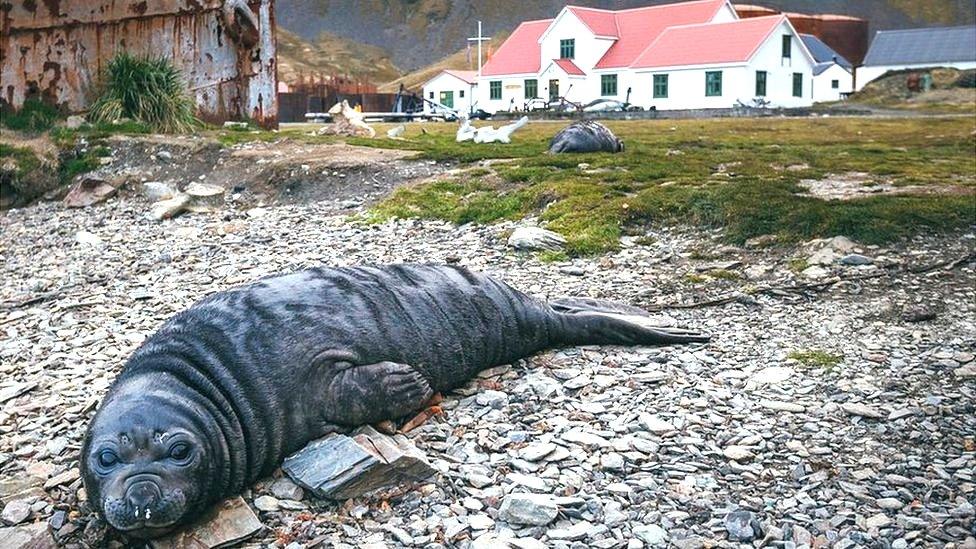
- Published17 September 2021

- Published5 July 2021
- Published22 April 2020
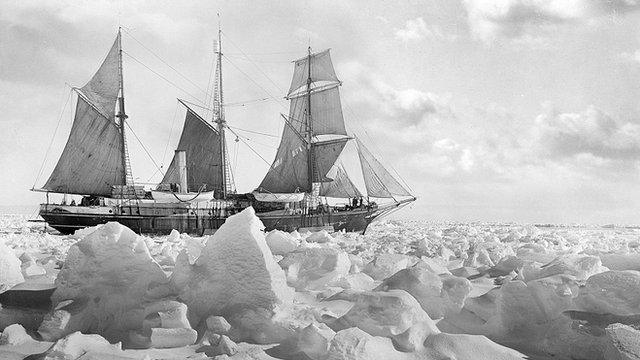
- Published14 February 2019
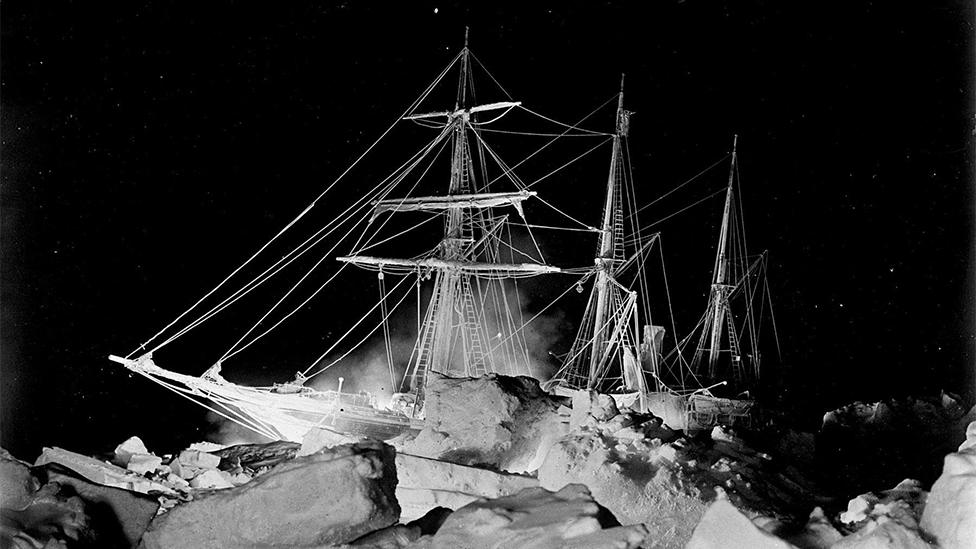
- Published24 August 2017
